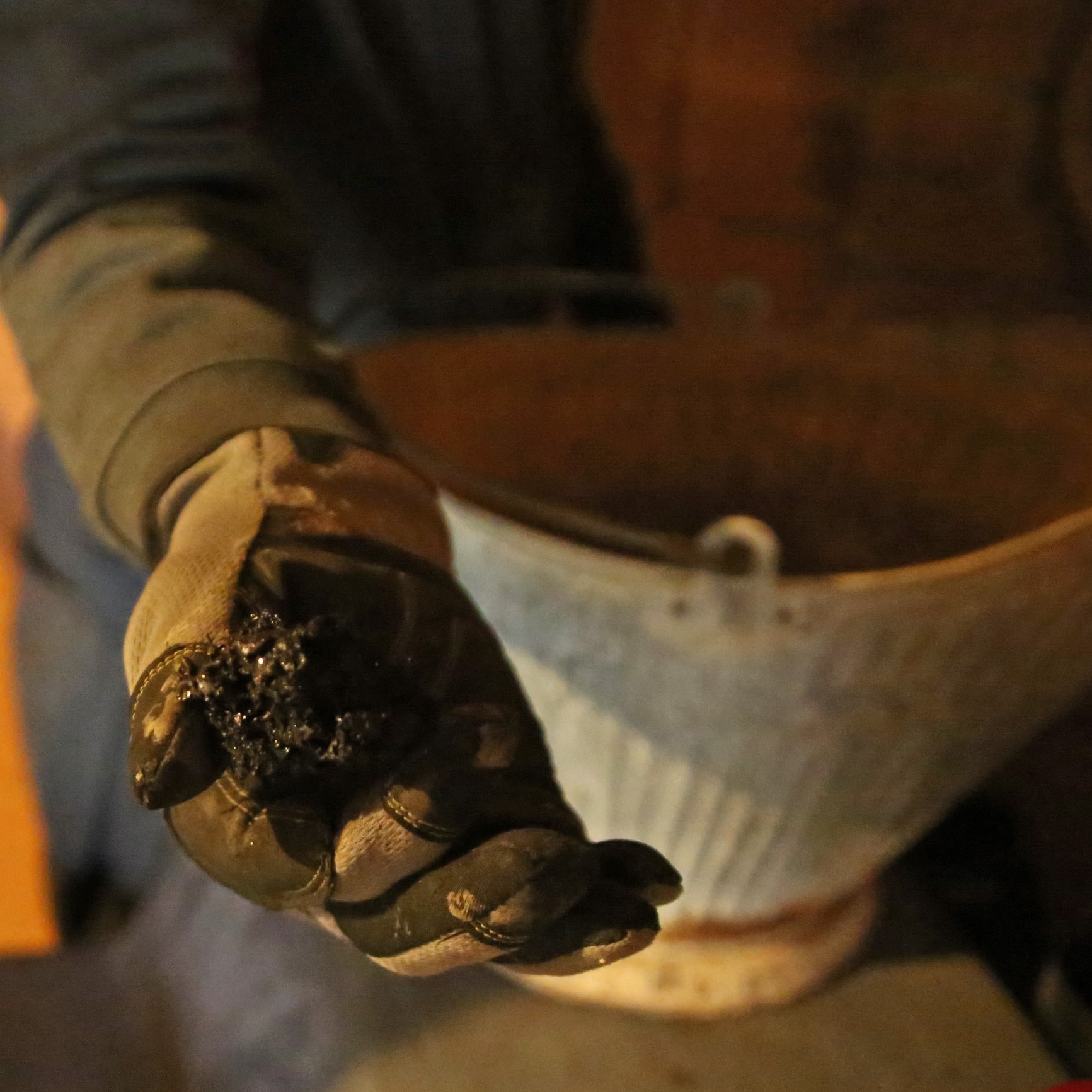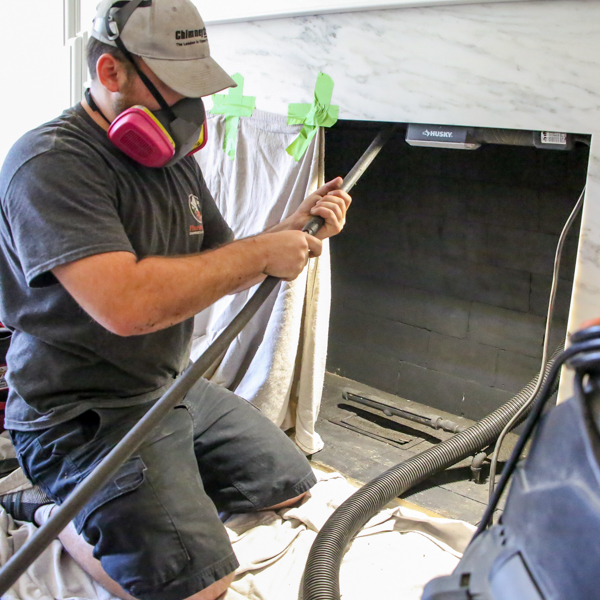Can I Prevent Creosote Buildup?
The chemical reaction that creates combustion when burning solid and liquid fuels produces several natural by-products, including creosote. Although we typically associate creosote build-up with wood-burning fireplaces, even gas fireplaces have some creosote.
 Creosote is of particular concern because it hardens into a dark, tarry, and highly flammable substance that is very difficult to remove without regular chimney sweeping. In addition, the intense fireplace heat or a burning ember can spark a chimney fire that can damage the flue liner and quickly spread throughout the house resulting in significant property damage and injuries. According to National Fire Protection Association (NFPA) statistics, most residential structure fires are due to creosote build-up in the chimney.
Creosote is of particular concern because it hardens into a dark, tarry, and highly flammable substance that is very difficult to remove without regular chimney sweeping. In addition, the intense fireplace heat or a burning ember can spark a chimney fire that can damage the flue liner and quickly spread throughout the house resulting in significant property damage and injuries. According to National Fire Protection Association (NFPA) statistics, most residential structure fires are due to creosote build-up in the chimney.
How to Prevent Creosote Build-Up
Although you can’t eliminate creosote entirely when using the fireplace, there are several steps you can take to minimize creosote build-up.
Burn Seasoned Wood
Avoid burning fresh or green wood in the fireplace. The high moisture content in green woods produces smokier fires with more creosote. Instead, only burn hardwoods that have been seasoned or dried for six to twelve months. The lower moisture will make a cleaner, hotter, and longer-lasting fire with a lot less creosote. Some example hardwoods include ash, beech, birch, maple, and oak.
Watch For Airflow Restrictions
The chimney needs to draw sufficient draft to start and maintain a fire in the fireplace. However, small animals, leaves, twigs, and creosote buildup can cause a flue obstruction that restricts the airflow, impeding the performance of your fire. The incomplete combustion also produces smokier fires with more creosote. When flue obstructions are severe, a dangerous backdraft can occur that pushes smoke, creosote, and other debris out of the fireplace.
Warm the Flue Before Lighting the Fireplace
You can also help minimize creosote by warming the flue before lighting the fireplace. When the flue is cold, insufficient draft in the chimney can make it challenging to start and maintain a proper fire, thus producing more smoke and creosote. You can easily warm the flue by lighting a piece of cardboard or rolled newspaper and holding it under the flue until the draft reverses and goes up the flue.
 Schedule an Annual Chimney Inspection & Cleaning
Schedule an Annual Chimney Inspection & Cleaning
Annual chimney inspections and cleanings are essential to preventing creosote build-up and ensuring your fireplace is safe to operate. When creosote accumulates in the chimney, it can cover the flue liner, smoke shelf, damper, and other critical components in a tarry, charcoal-like substance. You may also notice a distinct asphalt-like odor coming from the fireplace. During an annual inspection, a certified chimney technician will visually examine the entire chimney system, including vents and attached heating appliances for creosote buildup, flue obstructions, leaks, masonry damage, and other issues that can affect the safety and performance of your fireplace. When the chimney technician determines cleaning is necessary, it can often be accomplished during the same visit.
Signs of Creosote Buildup
According to the Chimney Safety Institute of America (CSIA), an accumulation of 1/8” or more of creosote is hazardous and should be removed. Some of the signs of creosote buildup include:
- Black soot around the fireplace
- Insufficient draft
- Poorly burning or smokey fires
- Wood logs are not burning completely
- Dark tar-like deposits on the damper
If you notice any of the above signs of creosote buildup, contact Fluesbrothers to schedule an appointment with a certified chimney technician in Lee’s Summit, Overland Park, and throughout the Kansas City KS/MO region.
The post Can I Prevent Creosote Buildup? appeared first on Fluesbrothers Chimney Service.